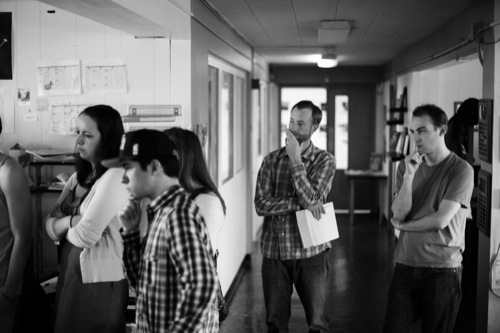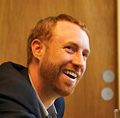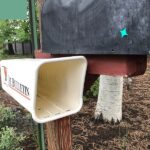 BY MARK BLAINE | OB BLOGGER
BY MARK BLAINE | OB BLOGGER
The publisher of the Emerald Media Group moves on, leaving a cutting edge media group that depends on business acumen for its survival.
 |
| //Photos by Ivar Vong, Emerald Media Group |
BY MARK BLAINE | OB BLOGGER
When in 2012 the Oregon Daily Emerald dropped the daily part of its name after 92 years, the paper could have kept on doing what it was doing — it had had its best financial year in a decade and had solid reserves. Blessedly, Publisher Ryan Frank and the Emerald team of students and professionals saw the value of diversification of not only content, but skill sets. They renamed the company, becoming the Emerald Media Group, and re-imagined what power of the press actually looks like nowadays in very practical terms.
Then they started to build by dismantling a lot of what came before. A media company of this ilk doesn’t just print papers; its people think like developers who are able to pivot in the face of challenge and trust the inherent skill an talent of the team. He challenged his team: If you had $750,000 (annual operating budget) from a venture capitalist, what would you build?
Frank liked to quote a finding from the Pew Research Center for the People and the Press that showed the phenomenon statistically In 2006, 20% of college-age people said they read the newspaper every day. In 2008, that number was 14%. In 2010, it was 7%.
The reality is that the competition for eyeballs that any media organization has to deal with has moved into a new dimension in the last decade. Enter Frank.
If 2012 had been good, the decade before didn’t offer much confidence. The publication had been doing the same thing every year for less and less gain and was on a trend to eat away those reserves. Then what? Frank set about changing culture and bottom line, building a sense of what’s possible and taking a risk with his own career. So you’re going back to be the publisher of the college newspaper that you used to edit? It sounded like the pitch for a buddy comedy movie.
They settled on a simple formula: “We can do the journalism that matters most — and cut out the rest,” the team wrote in its manifesto. “In other words, the web will be the ‘what’ happened and the print will be the ‘how and why.’” They grew their presence in social media, built a creative agency and launched careers in news, yes, but also in design, advertising and digital development. They won College Newspaper of the Year.
The Emerald is independent. It’s nested in the University of Oregon and is an institution there, but it’s an institution within the institution, meaning that the sustainability of the publication depends entirely on the business acumen of its team. They get no money from the University. So it’s a publication that deals with the same market forces that any other publication deals with, with one hitch: Its core readership wants its media in very different forms than what keeps newspapers elsewhere hanging on.
The Emerald isn’t reflective of other media out there. It isn’t “like” bigger news organizations, only smaller. It is the on the cutting edge of sustainable news without splashy grants or benefactors.
Ryan Frank stood in front of a packed staff meeting on Friday, March 7, the screen behind him illuminated with the short-in-years, long-in-accomplishment timeline for the Emerald Media Group. From the beginning, he hadn’t planned on being here for more than a few years and now his time was up. Later this month he will start as the political editor for the Las Vegas Sun and will hand the job off to to the new publisher, Charlie Weaver.
Frank has so much to be proud of in his time – back – at the Emerald because he created something that only that farewell meeting could show, a new energy and passion for news in both for print and pixels. We will miss him in the neighborhood.
Mark Blaine blogs on the media biz for Oregon Business.

 BY MARK BLAINE | OB BLOGGER
BY MARK BLAINE | OB BLOGGER

